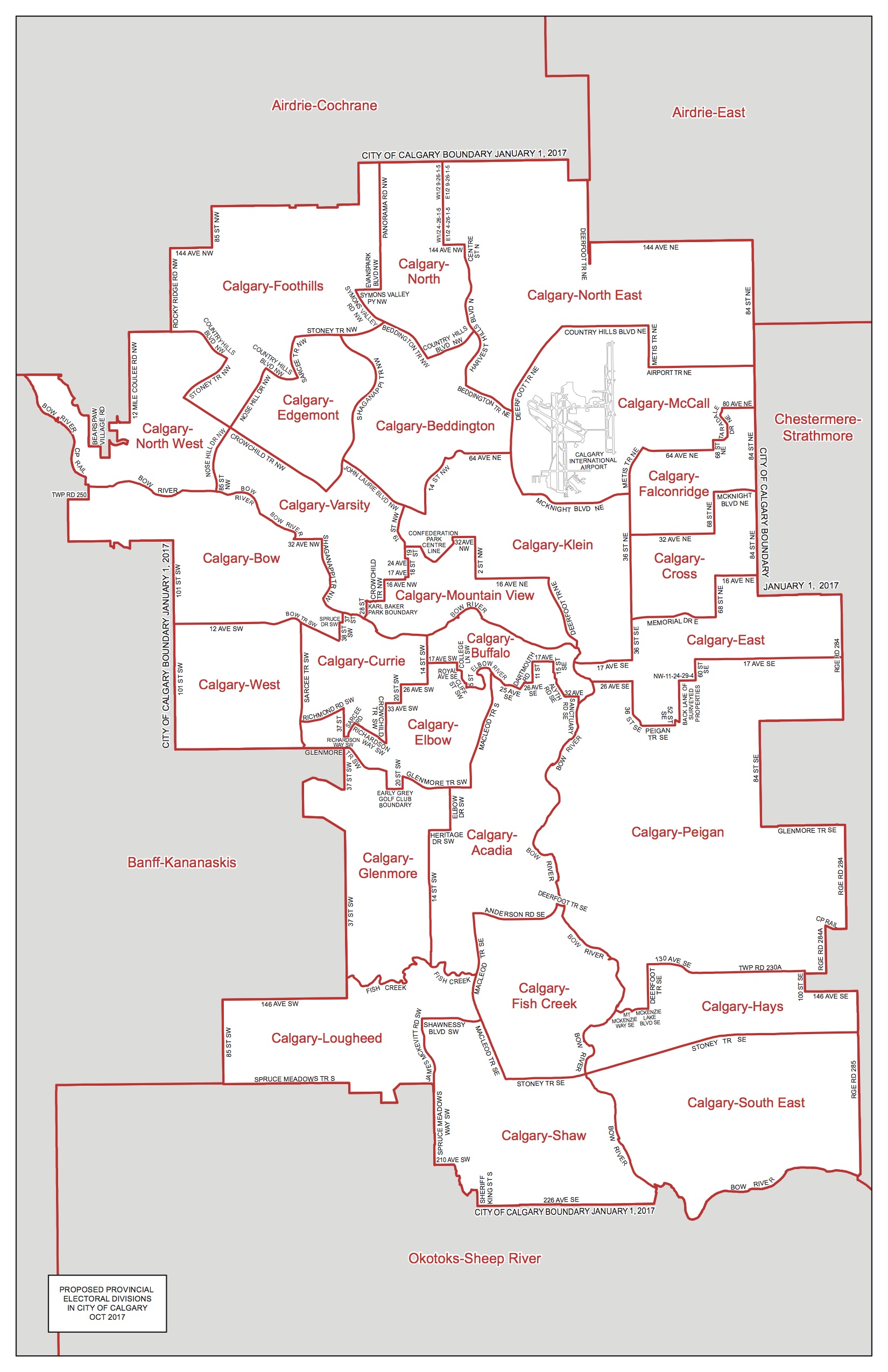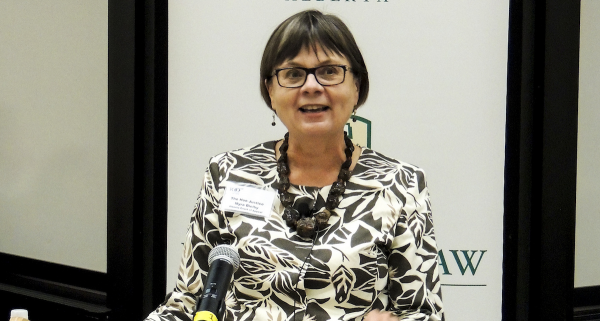Photo: Justice Myra Bielby chaired Alberta’s Electoral Boundaries Commission.
The final report of the Alberta’s Electoral Boundaries Commission was released today with recommendations to redraw the province’s electoral map for the 2019, and presumably the 2023, elections.
 The challenge facing the five-person commission was to redraw Alberta’s electoral boundaries to reflect growth and declining population in regions across the province. Without the ability to increase or decrease the number of constituencies from the current 87, the commission’s work was no easy task.
The challenge facing the five-person commission was to redraw Alberta’s electoral boundaries to reflect growth and declining population in regions across the province. Without the ability to increase or decrease the number of constituencies from the current 87, the commission’s work was no easy task.
I was pleased to see the final report recommends new boundaries that will increase representation in the Legislature from growing communities such as Calgary, Edmonton, Airdrie, Grande Prairie, Spruce Grove, Cochrane and Chestermere.
I was pleased to see the final report incorporate a number of changes that I recommended in my initial submission in February 2017 and response to the interim report in July 2017.
In my response to the interim report, I recommend that the Commission attempt to keep districts within ten percent, and ideally within five percent, above or below the provincial average population per electoral district. The commission improved this average in the final report, with 73 of 87 districts now falling with ten percent above or below the provincial average.
 The creation of the Morinville-St. Albert district north of Edmonton is an improvement from both the current boundaries and those included in the interim report. Rather than splitting the Sturgeon Valley communities like spokes in a bicycle wheel-like districts like the current Barrhead-Morinville-Westlock and Athabasca-Sturgeon-Redwater, drawing these communities into a common district north of Edmonton is a sensible choice.
The creation of the Morinville-St. Albert district north of Edmonton is an improvement from both the current boundaries and those included in the interim report. Rather than splitting the Sturgeon Valley communities like spokes in a bicycle wheel-like districts like the current Barrhead-Morinville-Westlock and Athabasca-Sturgeon-Redwater, drawing these communities into a common district north of Edmonton is a sensible choice.
The final report renames some of the odd district naming choices including in the interim report, such as Calgary-Airport, Edmonton-Mill Woods-East and Edmonton-Mill Woods-West.
The final report eliminates the problems with the shelter belt-like Fort Saskatchewan-St. Paul, Vermilion-Lloydminster and Stettler-Wainwright districts proposed in the interim report.
Eliminating the non-contiguous district of Wetaskiwin-Camrose and recommending the creation of a Maskwacis-Wetaskiwin district will bring together a large community of interest that was previously split into two districts. This is positive.
 While the final report eliminates some troubling rural district changes that were included in the interim report, it does include some of its own odd boundary changes. Most notable is the hour-glass shaped Cardston-Siksika district that would include two large sprawling rural areas that connect through a narrow gap near Lethbridge.
While the final report eliminates some troubling rural district changes that were included in the interim report, it does include some of its own odd boundary changes. Most notable is the hour-glass shaped Cardston-Siksika district that would include two large sprawling rural areas that connect through a narrow gap near Lethbridge.
The final report also recommends the elimination of the single urban Medicine Hat district in favour of creating two rurban districts, Brooks-Medicine Hat and Cypress-Medicine Hat. This may face criticism in Medicine Hat, which has had its own urban district since at least the 1960s.
Having to balance regional population growth and decline without having the ability to increase the number of districts makes the task of redrawing districts very challenging. The lines must be drawn somewhere. And while this final report will not please everyone, the commission should be commended for their hard work.
The final report will be presented to the Legislative Assembly in the fall session, which begins at the end of October, and will require the support of a majority of MLAs to be approved.
What does this mean for incumbent MLAs?
The boundary changes propose in the interim report could led to incumbent MLAs facing each other in next election.
In northwest Alberta, Grande Prairie-Smoky United Conservative Party MLA Todd Loewen could face Dunvegan-Central-Peace Notley New Democratic Party MLA Marg McCuaig-Boyd in the new Dunvegan-Notley district.
North of Edmonton, Barrhead-Morinville-Westlock UCP MLA Glenn Van Dijken could face Athabasca-Sturgeon-Redwater NDP MLA Colin Piquette in the new Athabasca-Barrhead district. And in northeast Alberta, three UCP MLAs – Brian Jean, Dave Hanson and Scott Cyr – will need to face the reality that only two districts will exist in their region in 2019.
NDP MLA Trevor Horne will see his current Spruce Grove-St. Albert district absorbed into a redrawn St. Albert district and the new Lac Ste. Anne-Parkland and Spruce Grove-Stony Plain districts. Much of the areas included in these proposed districts are currently represented by NDP MLAs Marie Renaud, Erin Babcock and Oneil Carlier.

